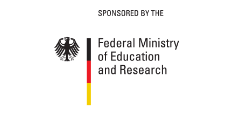In the German colony Blumenau in Southern Brazil Fritz Müller became indigenous 1852. Here he had emigrated out of disappointment over the political development in Germany. Initially, the immigrant kept himself and his family afloat in the Atlantic Forest with agriculture. Later he worked as a teacher at a school in Desterro (today: Florianópolis) and as a "traveling naturalist" for the Natural History Museum in Rio de Janeiro. Despite the seclusion of his place of residence, Fritz Müller was able to maintain intensive scientific exchange with botanists and zoologists in Europe by ship mail.
The special exhibition of the Research Museum Alexander Koenig shows the correspondence from the Historical Archive Blumenau. Its evaluation was carried out by the historian Ana Maria Moraes from Blumenau in cooperation with Katharina Schmidt-Loske, the director of the Biohistoricum at the ZFMK. As a traveling exhibition, which has already been shown in Brazil and can now be seen in Germany for the first time, more than a dozen banners provide information on the respective sender. Among the correspondents are naturalists beyond Ernst Haeckel and Charles Darwin. They are no less significant and complement Fritz Müller's network with more names. When teaching and placing scientific findings in German and English-language magazines, his younger brother Hermann Müller, a pedagogue and naturalist in Lippstadt, Westphalia, can not be missing. The exhibition is also dedicated to him.







